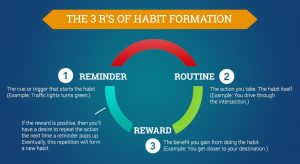If you are easily pulled away by bells, whistles, questions, kids or other minor interruptions throughout your day, then you know how all-consuming distractions can be when you lose focus & chase down the
SQUIRREL!!
Remember this scene from the Pixar feature “Up!”? Chasing the squirrel is a distraction. An article from Scientific American notes “Our brains have developed a way to block out distractions—but it seems that it is the ones we do not notice that cause us to deviate most from our objectives.” If your objective is a healthier lifestyle, then consider trying to eat without distraction.
Eating “Amnesia”
The concept of “mindful eating” is not new. Most health conscious people understand that mindful eating means to take time to focus on your meal; all of it. From start to finish. This means you chew more slowly, taste every bite and ‘savor the flavor”, as it were. So would you consider yourself a “mindless eater” if you did all that while watching TV? Probably not. And, according to different studies conducted over the years, you would be wrong. Evelyn Tribole, MS RD, thinks about the terms involved when working with clients. Most people don’t think of themselves as “mindless”. However, the same group might consider themselves “distracted”.
Tribole points to one study that showed “distracted people ate faster. In addition, participants couldn’t remember what they ate, ate more snacks and felt less full. The research also showed that that distraction during a meal influenced meal size later in the day.”
“Mindless” vs. “Distracted” Eating: Your “Squirrel” May Be The Environment
 Another article from Lakanto describes mindless eating as “when you eat without thinking. Think downing a bag of chips while you’re watching Netflix…”. And, typically, one doesn’t plan to eat an entire bag of chips in one sitting. You just do it. The same article explains that distracted eating “happens during a planned meal or snack. For example, you eat lunch at lunch time, per usual. But, you end up doing something else while you’re eating your meal, like checking email…”.
Another article from Lakanto describes mindless eating as “when you eat without thinking. Think downing a bag of chips while you’re watching Netflix…”. And, typically, one doesn’t plan to eat an entire bag of chips in one sitting. You just do it. The same article explains that distracted eating “happens during a planned meal or snack. For example, you eat lunch at lunch time, per usual. But, you end up doing something else while you’re eating your meal, like checking email…”.
According to a Washington Post article, one study found “two types of distraction around food: Distraction From Hunger & Distraction From Eating.” Briefly, participants were divided into groups in order to “eat while doing a driving simulation, watching television, talking with a researcher or sitting alone with no distraction.” The results?
- The drivers were so distracted from both hunger and eating that they ate a small amount, mindlessly.
- Those watching television were distracted from hunger but not from eating, so they mindlessly ate a large amount.
- Those interacting with the researchers were distracted from eating but still aware of their hunger. They ate little, probably because it’s awkward to eat alone while a stranger watches.
- Eating completely alone allowed attention to both hunger and eating — in other words, mindful eating.
Building A New Habit
According to Kelly Abramson, MS RD,
“TUNING IN to your body is a key part of becoming an intuitive eater.”
In Abramson’s article “Put Down That Phone“, she includes a simple guide to learn to eat without distraction and challenges the reader to chose a meal to eat without distraction, set a timer for 5 minutes and enjoy your meal. While you’re eating, think about what you are eating, note any feelings associated with the experience and keep those in mind. Download the free PDF workbook Abramson includes with her article to help you in your journey.
journey.
“Squirrel” Resources
Use these links to learn more about distracted eating, emotional eating and how to get yourself back on track.
- Mind-ing What You Eat
- Mindful Eating: Maintain A Healthy Weight & Appetite
- Weight Loss: Gain Control of Emotional Eating
- Master or Slave: Evaluate Your Technology Use
